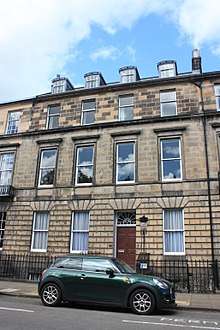William Gloag, Lord Kincairney
William Ellis Gloag, Lord Kincairney (7 February 1828 – 8 October 1909) was a Scottish judge.
Life

Born in Perth on 7 February 1828, he was son of William Gloag, a banker in Perth, by his wife Jessie, daughter of John Burn, writer to the Signet of Edinburgh. Paton James Gloag the theologian writer and Moderator of the General Assembly of the Church of Scotland in 1889, was his eldest brother, and his eldest sister was Jessie Burn Gloag, who founded a ragged school in Perth.[1]
Educated at Perth grammar school and Edinburgh University, Gloag passed on 25 December 1853 to the Scottish bar, where he enjoyed a fair practice. A Conservative in politics, he was not offered promotion till 1874, when he was appointed advocate depute on the formation of Disraeli's second ministry.[1]
In 1877 Gloag became sheriff of Stirling and Dumbarton, and in 1885 of Perthshire. In 1889 he was raised to the bench, when he took the title of Lord Kincairney.
In later life he had an Edinburgh townhouse: a huge Georgian house at 6 Heriot Row, previously the house of the author, Henry Mackenzie.[2]
He died at Kincairney on 8 October 1909, and was buried at Caputh.[1] He is also memorialised on his brother Paton's grave in Dunning.[3]
Works
- Introduction to the Law of Scotland, Green, 1995
Family
In 1864 Gloag married Helen, daughter of James Burn, writer to the Signet, Edinburgh, by whom he had one son, William Murray Gloag, and three daughters.[1]
Notes
- 1 2 3 4

- ↑ edinburgh and Leith Post office Directory 1905-6
- ↑ http://www.dunning.uk.net/gston2.html
Attribution

Sources
- Rodger, A. F. "Gloag, William Murray (1865–1934)". Oxford Dictionary of National Biography (online ed.). Oxford University Press. doi:10.1093/ref:odnb/37461. (Subscription or UK public library membership required.)